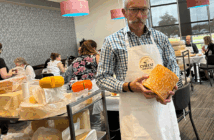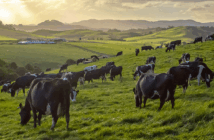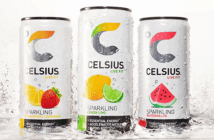By Natalie Martin, 3R materials innovation manager
In the world of packaging sustainability plastic gets plenty of attention, particularly from consumers, but it’s a little-known fact a popular alternative, fibre (cardboard and paper), faces challenges of its own.
Firstly though, it’s important not to equate the two as they have different properties, benefits and negative impacts. For example, plastic’s durability and light weight means in most cases it has a far smaller carbon footprint than fibre. However, fibre has almost no impact on the environment if littered.
Like plastic, one of New Zealand’s biggest challenges with fibre is a limited capacity to recycle it onshore. In fact, some 250,000 tonnes of fibre go overseas annually for recycling.
These overseas markets, again like plastic, have or are implementing stringent criteria on contamination, meaning options for fibre exports are drying up unless contamination can be reduced. There are other factors which make fibre recycling more difficult too, such limited outdoor storage time, and that it degrades if stockpiled for prolonged periods.
In New Zealand there is no standardised kerbside collection system, which itself leads to contamination or downgrading of the fibre.
Setting up onshore processing for fibre has a significant cost and lead time – far more than plastic – which sees processors considering an upgrade to sorting equipment to reduce contamination as the more viable option.
As a result, recycling fibre has become very expensive for some geographically isolated councils. In late 2020 Buller Council said it was discouraging residents from putting paper and cardboard out for recycling until the market improved.
There are however, some good examples of onshore solutions for fibre in New Zealand, such as Hawk Packaging in Hawke’s Bay. It uses fibre collected in the region to make products such as apple trays for the horticultural market.
All of this isn’t to say fibre can’t be used as a sustainable packaging material, but the entire lifecycle must be considered. Plus, ensuring any mixed material layers which may reduce the recyclability of fibre are clearly labelled on packaging to help reduce contamination.
So, if you are considering using fibre packaging take a deeper dive to find out more about its pros and cons and how recyclable your packaging is.
Natalie Martin is the materials innovation manager at 3R Group in Hawke’s Bay. She has a background in food technology and over 10 years’ experience in new product development for FMCG and still supports the industry as a consultant. At 3R, Natalie works in new product development for various waste streams, including packaging.
The information and opinions within this column are not necessarily the views or opinions of Hot Source, NZ Food Technology or the parent company, Hayley Media.






























































































